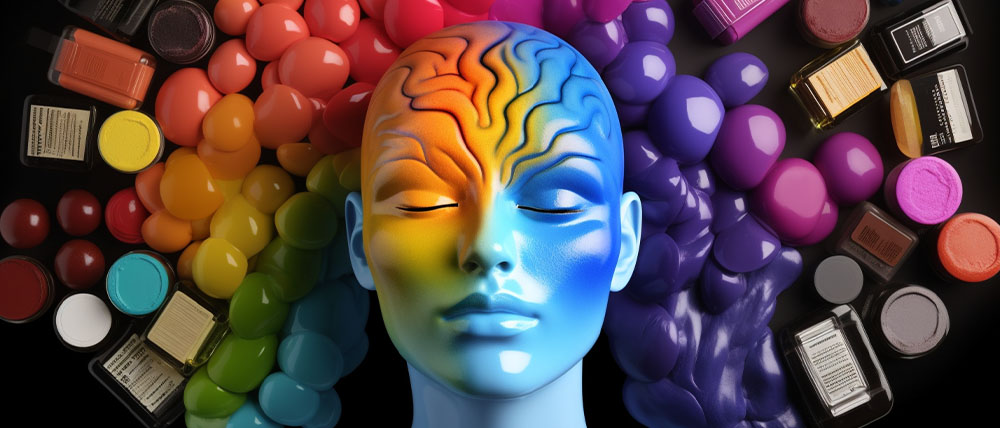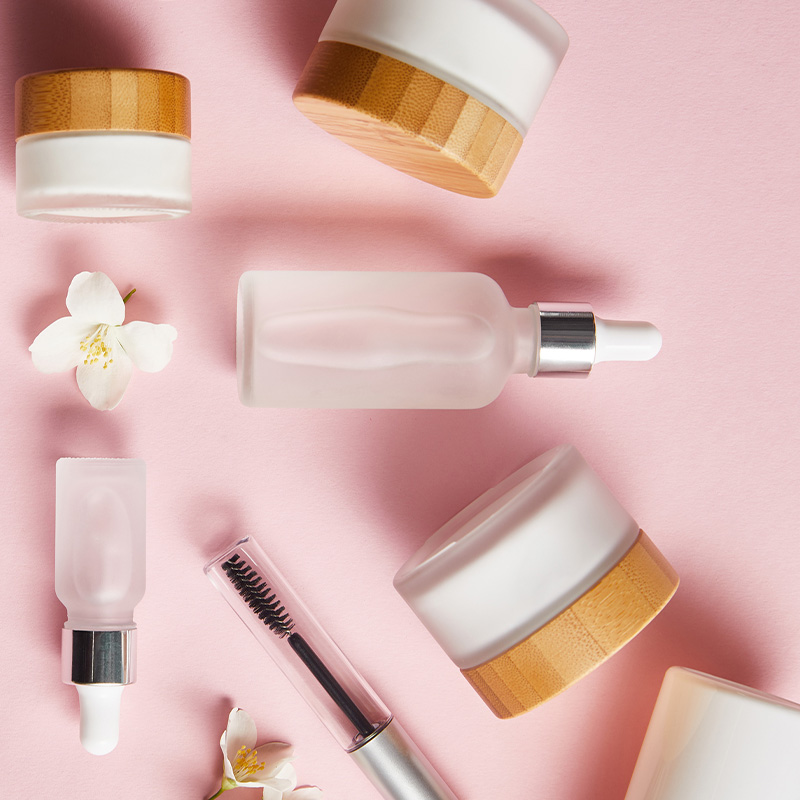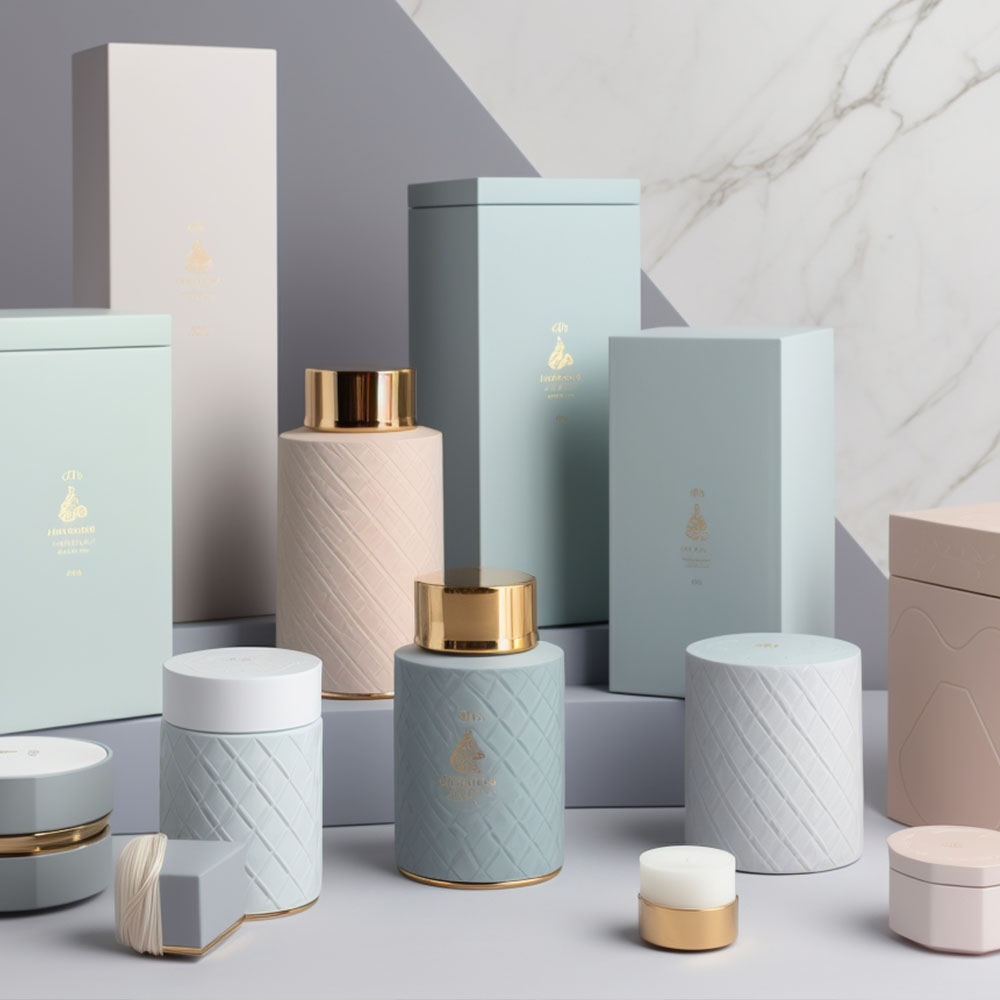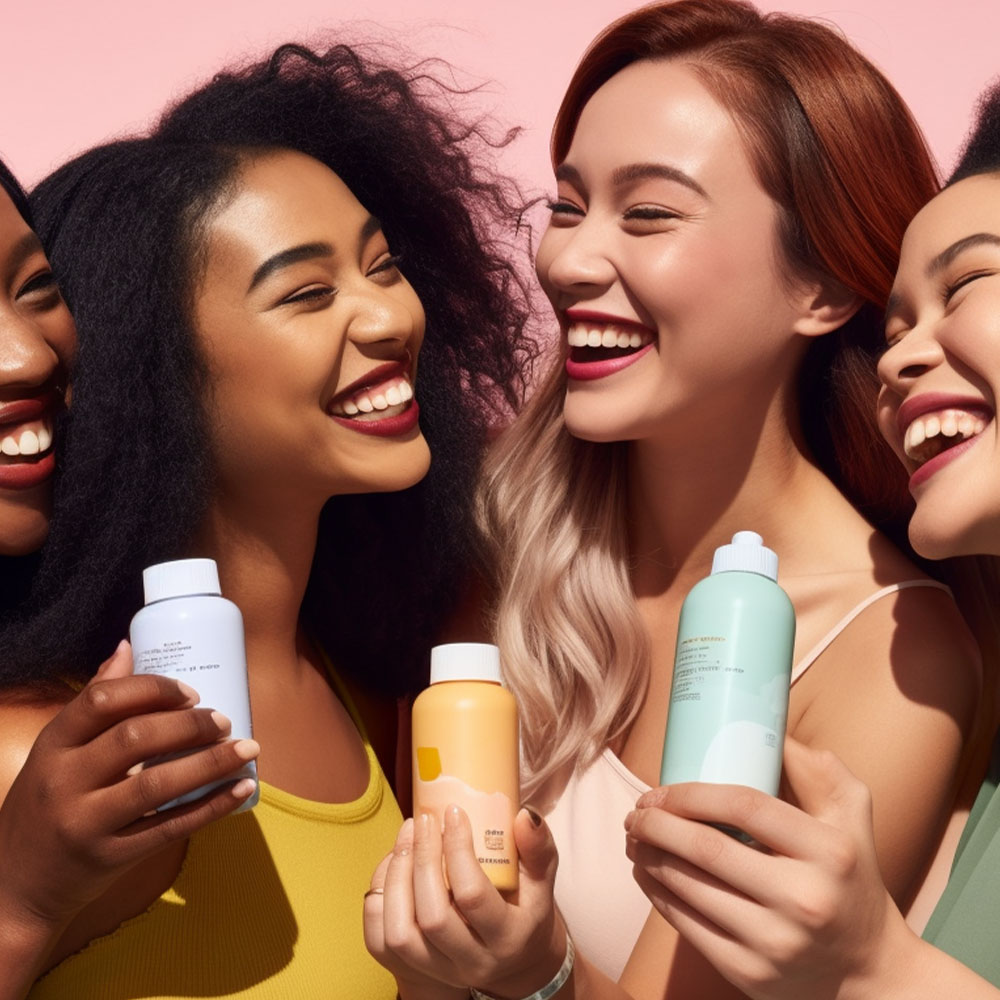
Welcome to the world of neuromarketing for beauty brands! We are here to guide you through the exciting realm where science meets marketing. Neuromarketing is a cutting-edge technique that has revolutionized how businesses understand their customers and cater to their needs. Beauty brands are no exception – using neuroscience to decode consumer behavior can help them create more effective and engaging campaigns.
At its core, neuromarketing is all about tapping into the subconscious desires of consumers by studying their brain activity. This means looking beyond what people want and understanding what motivates them deeper. For beauty brands, this could mean uncovering why specific visual cues or product packaging trigger positive emotions in customers or identifying which scents evoke specific memories or associations. In addition, by using advanced technologies like EEG (electroencephalography) and fMRI (functional magnetic resonance imaging), marketers can gain insights that traditional market research methods cannot provide. So let’s dive into the fascinating world of neuromarketing for beauty brands – where innovation meets psychology!
The Power Of Subconscious Desires
Imagine having the ability to tap into the subconscious desires of your target audience. What if you knew precisely what emotional triggers would drive them to purchase your beauty brand? Welcome to the world of neuromarketing, where science meets marketing to understand consumer behavior on a deeper level.
Unconscious desires are at play regarding purchasing decisions, often overriding rational thinking. These hidden desires are rooted deep within our psyche and can be difficult for consumers to articulate or recognize themselves. As a beauty brand, understanding these unconscious desires is critical to creating effective marketing campaigns that resonate with your audience.
Emotional triggers also play a crucial role in driving consumer behavior. These powerful stimuli activate specific areas of the brain associated with emotion and decision-making. A good marketing message using triggers can make consumers feel strongly and buy.
By utilizing neuromarketing techniques, beauty brands have the power to unlock the secrets of their customers’ subconscious minds. This knowledge allows for more targeted and effective marketing strategies that speak directly to their deepest desires and emotions. By building stronger connections, brands can boost sales and loyalty without using a direct “buy now” approach.
The Neurological Basis Of Consumer Behavior
The Power of Subconscious Desires is a crucial factor in understanding consumer behavior. Neuromarketing shows emotions and subconscious desires impact decisions, not just rational thinking. This section will explore the Neurological Basis of Consumer Behavior to gain insights into consumers’ purchasing decisions.
Neurological decision-making plays a significant role in shaping consumer preferences. Our brain processes information through regions like the prefrontal cortex, amygdala, hippocampus, etc., which play different roles in decision-making. For instance, the prefrontal cortex helps with goal setting and planning, while the amygdala processes emotional responses. Understanding these mechanisms can help beauty brands create more effective marketing strategies that cater to their target audience’s neurological makeup.
Consumer psychology insights further emphasize the importance of emotional engagement and personalization in marketing efforts. For example, people tend to form strong associations between particular sensory cues and specific products or brands they use regularly. Therefore beauty brands must focus on creating memorable experiences for their customers by engaging multiple senses, such as scent, touch, sound, etc.
To capitalize on these psychological insights effectively, beauty brands must utilize innovative techniques that tap into consumers’ subconscious desires. Use fMRI and EEG to track brain activity when showing stimuli related to a product category.
In conclusion, delving deep into the Neurological Basis of Consumer Behavior provides invaluable insights into how people make buying decisions. Neuromarketing research shows emotional engagement and personalization boost beauty brand sales more than traditional ads. Use these insights to understand audience needs and drive loyalty.
The Role Of Visual Cues In Marketing
Visual cues are essential in marketing as they play a significant role in influencing consumer behavior. Visual storytelling is one of the most effective ways to communicate brand messages and connect with consumers emotionally. With the help of visuals, brands can effectively convey their story, values, and culture.
Color psychology is another crucial aspect of visual cues that marketers should consider when creating campaigns. Each color has a unique psychological effect on people’s moods and emotions. For instance, red evokes passion and excitement, while blue creates a sense of calmness and serenity. Understanding color psychology can help beauty brands create more targeted advertising campaigns that resonate well with their target audience.
For neuromarketing in beauty, strategic use of visuals is essential. Use real people in visuals for authentic content that resonates with audiences.
In summary, visual cues such as visual storytelling and color psychology are potent tools that beauty brands can use to influence consumer behavior positively. By subconsciously understanding how these elements affect human perception, businesses can develop innovative marketing strategies that deliver results beyond expectations.
The Impact Of Product Packaging On Emotions
Product design plays a crucial role in the success of beauty brands. However, it is not just about creating aesthetically pleasing products; packaging also significantly impacts emotions. How a product looks and feels can evoke certain feelings that influence consumer behavior. This is where neuromarketing comes into play.
Color psychology is an essential aspect when it comes to product packaging. Different colors have different meanings and can affect our moods and emotions differently. For example, blue connotes calmness and trustworthiness, while red signifies passion and urgency. Beauty brands should consider this when designing their product packaging, as it could make or break their brand image.
Beauty brands must ensure their product packaging effectively aligns with the intended branding message. For example, a well-designed package can create a sense of luxury for premium skincare products or appeal to eco-conscious consumers with sustainable materials such as glass bottles or recyclable plastics. In addition, effective product design helps increase consumer engagement and loyalty and drives sales when done right.
Incorporating insights from neuromarketing research into product design will help beauty brands stay ahead of the curve in today’s competitive market. By leveraging color psychology and other sensory cues such as texture, shape, and scent, companies can create emotionally compelling customer experiences that ultimately drive purchasing decisions – without them even realizing it! In addition, optimizing your product design through neuromarketing research can significantly increase customer satisfaction and loyalty over time.
The Connection Between Scents And Memories
The Impact of Product Packaging on Emotions has been thoroughly studied in neuromarketing. It is a well-known fact that packaging design can influence consumer emotions and decision-making processes. However, the scent is another decisive factor when creating a memorable brand experience.
Scent-triggered nostalgia is a phenomenon where certain smells can evoke memories from our past. This connection between scents and memories occurs because the olfactory bulb, which processes smells, is close to areas of the brain responsible for processing memory and emotion. Therefore, incorporating specific scents into products or retail environments can create strong emotional connections with consumers.
Olfactory branding strategies are becoming increasingly popular among beauty brands as they recognize the power of scent in creating brand loyalty and positive associations. For instance, some skincare brands use lavender essential oil in their products to promote relaxation and stress relief, while others incorporate citrus notes to convey freshness and energy.
When developing an olfactory branding strategy, it’s essential to consider cultural differences and individual preferences, as certain scents may have different meanings across various demographics. Additionally, consistency is vital to creating a recognizable brand identity through scent.
Incorporating scent into your marketing mix can differentiate your product from competitors by tapping into consumers’ subconscious desires for unique experiences beyond visual aesthetics. By understanding the science behind scent-triggered nostalgia and implementing effective olfactory branding strategies, beauty brands can develop long-lasting emotional connections with consumers that drive repeat purchases and brand loyalty.
The Benefits Of EEG Technology For Neuromarketing
As the saying goes, “Knowledge is power.” And in neuromarketing, EEG technology provides knowledge that can empower beauty brands to make informed decisions. So what are the benefits of utilizing this cutting-edge tool?
First and foremost, EEG applications provide unparalleled insight into how consumers engage with products. By measuring attention and engagement levels at a neurological level, we can better understand what drives purchasing behavior. This information can then be used to optimize marketing strategies, messaging, and even product design.
Another benefit of EEG technology is its ability to reveal subconscious reactions to stimuli. While traditional market research methods rely on self-reported data, studies have shown that up to 95% of our decision-making processes occur subconsciously. With EEG monitoring, we can tap into these hidden responses and use them to create more effective campaigns that resonate with customers on a deeper level.
Moreover, EEG technology allows for real-time feedback during marketing experiments. Instead of waiting for post-experiment surveys or focus groups, researchers can see how participants’ brains respond as they interact with different stimuli. This enables faster iteration and optimization of campaigns, as well as more accurate insights into what resonates with consumers at a subconscious level. By leveraging the power of EEG technology, marketers can create more effective and engaging campaigns that drive better results for their brands.
The Insights Gained From fMRI Analysis
The Benefits of EEG Technology for Neuromarketing have been established, and it is now time to explore the insights gained from fMRI analysis. While EEG measures neural activity on a surface level, fMRI scans allow us to see how different regions in the brain light up when exposed to certain stimuli.
One critical insight that can be gained from fMRI analysis is understanding Brand Preference. By scanning participants’ brains while they are shown images or advertisements for different brands, we can identify which brain areas are activated when they view each brand. These activations can then be compared across individuals or groups to determine which brands elicit the most robust positive response.
Another critical aspect of fMRI analysis is its ability to showcase how our brains process visual information. For example, studies have found that when people view images of faces, specific regions of their brains activate, indicating emotional processing. Similarly, when viewing images related to beauty products, areas responsible for reward processing may light up – this could indicate that consumers perceive these products as luxurious or pleasurable.
In addition to identifying neural correlates associated with product perception and preference, fMRI has also been used to investigate consumer decision-making processes. For example, researchers have studied how different parts of the brain work together during decision-making – such as weighing pros and cons – and even identified patterns of neural activity that predict whether someone will make a rational or impulsive choice.
Sub-lists:
- Key Insights Gained from fMRI Analysis
- Understanding Brand Preference
- Identifying Visual Processing Regions
- Investigating Consumer Decision-Making Processes
- Applications of fMRI Analysis in Neuromarketing Research
- Conducting Comparative Studies Across Brands
- Enhancing Product Design Through Insight into Customer Perception * Predicting Consumer Behavior and Response to Marketing Strategies
The Importance Of Emotional Engagement In Campaigns
Emotional engagement is essential to any successful marketing campaign, especially for beauty brands. It’s the key to creating a lasting impression on potential customers and building their trust in your brand.
Creating authenticity is one way to establish emotional engagement with your audience. By showcasing real people using your products and sharing their experiences, you can evoke positive emotions that resonate with viewers. In addition, this approach helps build trust by showing that your brand values honesty and transparency.
Another effective method of emotional engagement is storytelling. Beauty campaigns that tell stories often appeal to consumers’ emotions, resulting in long-term loyalty toward the brand. These stories could be about how a product was developed or how it has helped transform someone’s life – whatever resonates best with your target audience.
Building trust through emotional engagement ultimately leads to improved customer relationships and increased sales for beauty brands. When individuals feel connected to a brand emotionally, they’re more likely to make repeat purchases and recommend the company to others. Thus, businesses must prioritize establishing this connection when developing marketing strategies.
Incorporating emotional engagement tactics into beauty marketing campaigns may seem daunting, but it’s worthwhile. With careful planning and execution, brands can create meaningful connections with their audiences while increasing their bottom line.
The Ethics Of Neuromarketing In The Beauty Industry
Consumer privacy is a significant concern regarding neuromarketing in the beauty industry. Brands must ensure they aren’t collecting personal information without the customer’s knowledge. Emotional manipulation is another ethical issue that needs to be considered; neuromarketing should never be used to manipulate someone into buying a product. Unconscious branding is another concern; neuromarketing should be used to subtly build brand recognition and loyalty, not force someone into buying a product. Considering these ethical issues when discussing neuromarketing in the beauty industry is essential.
Consumer Privacy
Your data is valuable, and it deserves to be protected. In today’s digital age, where everything is online, beauty brands must ensure they have the necessary measures to safeguard your information. Data protection should not be overlooked as it is a fundamental aspect of ethical neuromarketing practices.
As consumers become more aware of their rights regarding privacy, companies need to comply with regulations such as GDPR (General Data Protection Regulation). This includes obtaining explicit consent from individuals before collecting personal data and ensuring that this information is only used for its intended purpose. Beauty brands are responsible for implementing these policies to protect their customers’ sensitive information.
However, much work remains to be done on consumer privacy in neuromarketing. Using biometric data such as facial recognition or brain scans raises concerns about how companies will handle and store this information. To maintain trust between consumers and beauty brands, transparency around collecting and using this data type must be increased.
In conclusion, protecting consumer privacy continues to present challenges in neuromarketing for beauty brands. While GDPR compliance has been an essential step toward addressing these issues, further efforts must be made to establish best practices around handling biometric data ethically. Additionally, beauty brands can build lasting relationships based on trust and respect by prioritizing data protection measures and being transparent with consumers about how their information is used.
Emotional Manipulation
Now that we have established the importance of data protection in neuromarketing let’s dive into another ethical consideration: emotional manipulation. Manipulative tactics are a common practice in marketing and advertising as they can effectively influence consumer behavior. However, moral implications must be considered when it comes to using neuroscience to manipulate emotions for commercial gain.
In the beauty industry, emotional manipulation often creates unrealistic beauty standards or promotes products with exaggerated claims. Using techniques such as subliminal messaging or manipulating color schemes can tap into the subconscious desires of consumers and influence their purchasing decisions without them even realizing it. While these practices may lead to short-term gains, they can damage brand reputation and erode consumer trust over time.
Beauty brands must use neuromarketing techniques to approach emotional manipulation with caution and transparency. Consumers should be made aware of any manipulative tactics being used so that they can make informed decisions about whether or not to engage with the product or service. Additionally, companies should prioritize creating positive emotional experiences for their customers rather than resorting to negative emotions like fear or shame.
While emotional manipulation can be tempting for marketers seeking quick results, ethical considerations must come first. Beauty brands utilizing neuromarketing must balance the potential benefits with concerns around privacy and consent and avoid unethical manipulations within their advertisements. By prioritizing transparency and positive customer experiences above all else, brands will build lasting relationships based on mutual respect instead of exploiting psychological vulnerabilities for profit.
Unconscious Branding
Now that we have discussed the ethical considerations of emotional manipulation in neuromarketing, let’s focus on another important topic: unconscious branding. This refers to using subliminal messaging and hidden persuasion techniques to influence consumer behavior without conscious awareness.
In the beauty industry, unconscious branding can be used in various ways, such as incorporating specific colors or sounds into advertisements that trigger certain emotions or memories. By doing this, brands can create associations between their products and positive experiences in consumers’ minds, increasing their likelihood of purchasing.
However, there are ethical concerns surrounding this practice. For example, consumers may feel manipulated or deceived if they discover that their purchasing decisions were influenced by subconscious messages they were unaware of. Additionally, using these tactics without transparency could erode trust in a brand over time.
Beauty brands must prioritize transparency and consent to navigate this ethical gray area. They should disclose any subconscious marketing techniques used so consumers can make informed decisions about whether or not to engage with their products. Brands should also strive to create genuine connections with their customers through positive emotional experiences rather than relying solely on manipulative tactics.
Overall, while unconscious branding can be an effective tool for marketers seeking to influence consumer behavior, it is crucial for beauty brands utilizing neuromarketing techniques to approach it ethically and transparently. By prioritizing consumer trust and positive customer experiences above all else, brands will build lasting relationships based on mutual respect instead of exploiting psychological vulnerabilities for profit.
The Future Of Neuromarketing For Beauty Brands
Neuromarketing research has become a game-changer in the beauty industry. By analyzing brain activity, marketers can predict consumer behavior and tailor marketing strategies to meet their needs better. The future of neuromarketing for beauty brands is bright, with exciting prospects to revolutionize how businesses engage customers.
With technological advancements, neuromarketing techniques are becoming more sophisticated. For example, eye-tracking technology can track where consumers look at product displays, while facial expression recognition software identifies product-generated emotions. This data helps marketers understand what drives purchasing decisions and design personalized experiences that resonate with their target audience.
Incorporating augmented reality (AR) into neuromarketing campaigns allows customers to try out different products virtually before purchasing. AR also enhances customer engagement by providing interactive content that appeals to younger audiences who crave innovation and new ways of experiencing things.
The possibilities are endless as we continue to explore the potential of neuromarketing for beauty brands. As predictive consumer behavior becomes more accurate, companies will have more significant insights into their customers’ preferences and expectations, enabling them to create tailored solutions that drive sales growth and enhance brand loyalty. With its ability to tap into subconscious desires, neuromarketing represents an innovative approach that could forever shape the beauty industry’s future.
Conclusion
In conclusion, the science of neuromarketing offers a powerful tool for beauty brands seeking to tap into their consumers’ subconscious desires. By understanding the neurological basis of consumer behavior, companies can craft marketing campaigns that appeal directly to their customers’ emotions and senses.
Brands can create deep emotional connections with their audience through visual cues, product packaging, and scent. And by analyzing brain activity through fMRI scans, marketers gain valuable insights into what truly resonates with their target demographics. The future of neuromarketing is bright for the beauty industry, enabling them to build stronger relationships with consumers based on trust and transparency. So if you want to elevate your brand’s marketing strategy, consider embracing this cutting-edge approach – your bottom line will thank you!
Let us help you build your brand. Click here.









